How did the "Zeng Guo" behind Qi Rose "dig out"?
Author:Look at the think tank Time:2022.09.12

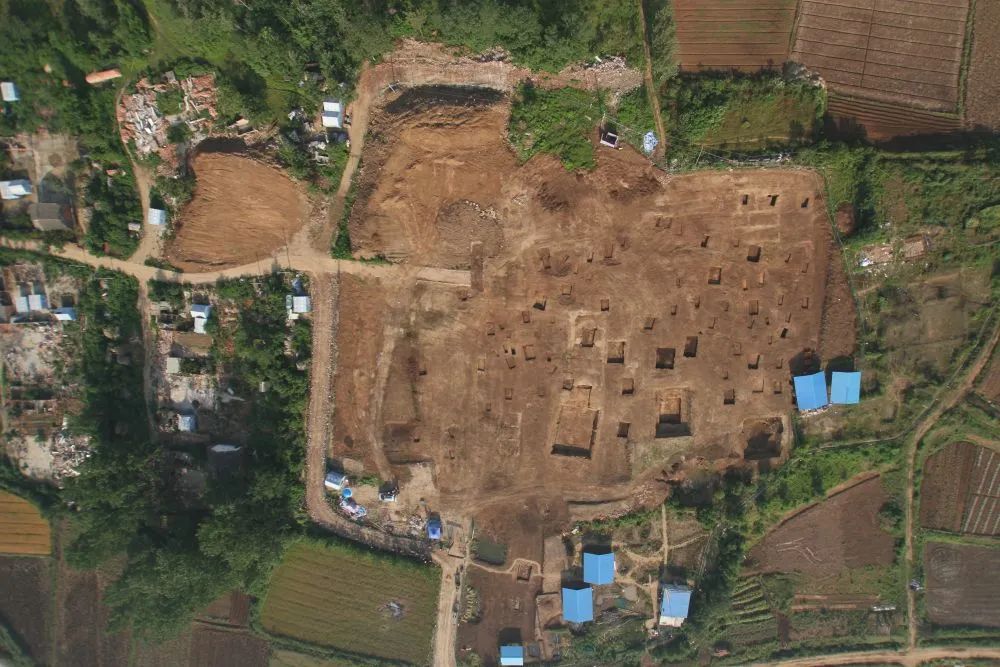
The second excavations of Yejiashan Cemetery excavated aerial photography panoramic photos from the Hubei Provincial Museum.
Zeng Houyi's tomb excavated in Suizhou Dagun, Hubei was famous in 1978. The bronze wares such as Zeng Houyi and Zeng Hou Yi Zunpan unearthed there, pushing the achievements of ancient Chinese bronze culture to its peak.
However, it is difficult to find the traces of the vassal country of "Zeng Guo" in the Jianghan area. What is "Zeng Guo"? Who is "Zenghou"? How can Zeng Houyi be the name of the ancient music and culture peak, how can it appear in the unknown country of Hanshui? Where does the many achievements shown by the bronze wares of Zeng Houyi come from?
History is confusing, but archeological excavations always bring unexpected surprises. After more than 40 years of archeological excavations, the researchers gradually opened up the fog and saw the face of a vassal country in the two weeks of Handong.
Text | Pi Shu Chu Xinhua Daily Telecommunications reporter
This article is reproduced from the WeChat public account "Xinhua Daily Telecom" (ID: XHMRDXWX). The original first was released on September 12, 2022. Essence
1
Not only Zeng Houyi, but also "Zeng Hou Bing"
In history, there have been a bronze in the "Zeng" inscription. For example, in the Song Dynasty Zhao Mingcheng's "Golden Stone Record", the "Zeng" inscription bronze was mentioned. In the 1930s, a large number of bronze wares were stolen by the military valve, and there were a large number of bronze wares, including "Zeng Ji No shot pot". In 1966, Jingshan Sujia, Hubei, found the "Zeng Hou Zhongzi Father" inscription bronze. Zeng Houyi tomb is a major archeological discovery that shocked China and foreign countries.
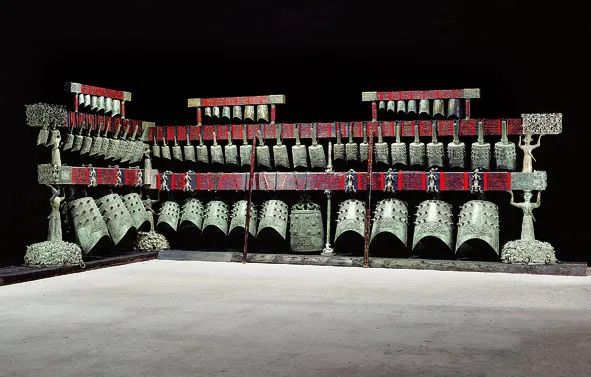
Zeng Houyi Bell.
Zeng Houyi bell with the magnificent "Qu hanging" structure, the wonderful structure of the "one -hour double sound", and the rich and vivid inscriptions, all occupy a place in the history of human culture, music, and scientific and technological history. In 2016, the Tenth International Music and Archaeological Conference signed in Wuhan's "East Lake Declaration" stated that Zeng Houyi was "concentrated in the 5th century BC of Chinese civilization, showing the wisdom created by human wisdom in the" Axis Age ". high".
The discovery of Zeng Houyi's tomb, the unearthed by the bell of Zeng Houyi also opened a journey of "revealing" the "Zeng Guo". The words "Zeng Houyi are held" on the bronze inscription of Zeng Houyi tomb. The biggest bell on the bell of Zeng Houyi bell, and the inscription wrote: "Only king fifty and six sacrifice, return from Xiyang, Chu, Chu, Chu, Chu, Chu, Chu, Chu, Chu, Chu, Chu, Chu, Chu, Chu, Chu, Chu, Chu, Chu, Chu, Chu, Chu, Chu, Chu, Chu, Chu. Wang Yan (Xiong) Zhang Zeng Hou Yizong Yi, laid in Xiyang, and enjoyed it forever. "During the Spring and Autumn and Warring States Period, there was indeed a vassal country called" Zeng Guo ". Zeng Houyi should be Zeng Guojun in the same period as King Xiong Zhang (that is, King Chu Hui).
The unearthed by Zeng Houyi bell is the surprise of archeologists, the surprise of the musician, the surprise of historical researchers, and the surprise of China and the world. It brings the music of 2400 years ago to this day, so that the world can appreciate the Hua Cai movements from the Confucius era. It will also sleep for more than two thousand years in the underground and almost blank vassal states in historical documents, and pull it into the field of today's people.
In July 1981, it was only a hundred meters away from Zeng Houyi tomb, and it was also found that an ancient tomb of the Warring States Period was named. A set of 36 storage 36 pieces of bells unearthed in the tomb and 12 editors. Although the tomb has been severely damaged when it was discovered, the identity of the tomb owner is the mystery of difficulty, and the scale of the unearthed bell is far less than that of Zeng Houyi. The same system as Zeng Houyi is the same system, which is connected with tone and sound. Therefore, the second tomb bell is called the "sister bell" of Zeng Houyi. Other bronze wares were also found in the tomb No. 2, especially a group of 9 -tribus and 8 -簋 bronze rituals, showing that the status of the tomb owner was extraordinary. Some scholars speculated that they might be Mrs. Zeng Houyi.
Today we see the "Zeng Houyi" in the Bronze Inscription, and it may be strange that how can Zeng Guojun take such a name. Interestingly, in the Hubei Wenfeng Tower Cemetery, which is separated from the tomb of Zeng Houyi (Jueshui River), archeologists also found a "Zeng Hou Bing" tomb. This is a tomb in the middle of the Warring States Period. More than 70 bronze utensils unearthed in the tomb, two of which have the "Zeng Hou Bing" inscription on the bronze crickets.
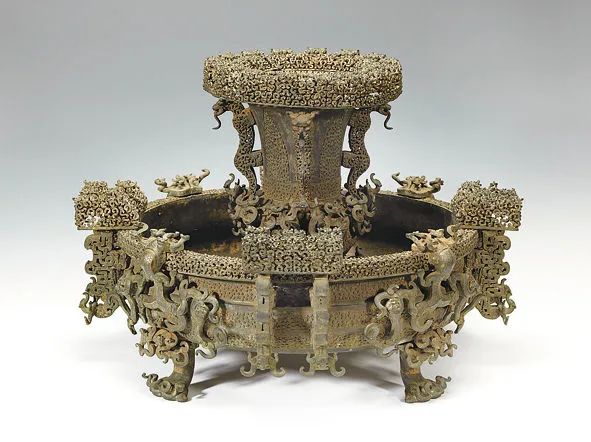
Zeng Houyi Zun Pan.
From the scale of the tomb and the unearthed utensils, experts believe that this is also a Tomb of Zenghou, and its tomb owner should be "Zeng Hou Bing". The age of Zeng Hou B is slightly later than Zeng Hou Yi, and "B" and "C" are their "Japanese names". The "Japanese name" is named after ten days, and it is not uncommon among the princes during the Shang and Zhou dynasties.
2
Archaeological writing is a "Zeng Family"
Since Zeng Houyi tomb has been excavated, archaeologists have found many Zeng Guo tombs in Suizao, Hubei. According to Fang Qin, the curator of the Hubei Provincial Museum and the dean of the Hubei Provincial Institute of Cultural Relics and Archeology, there are as many as 16 Zenghou Tomb that have been confirmed by archeological excavations. There are also 10 ladies' tombs. Archaeological materials have outlined the "brief history" of the development of the past 700 years in the early Western Zhou Dynasty to the middle of the Warring States Period, making Zeng Guo the only vassal country that can use archeological materials to build its basic history in the two weeks so far.
In 2009, the Wenfeng Tower Cemetery cleared and discovered a tomb in the late Spring and Autumn Period, and the bronze wares such as Ding, 缶, 鬲, and chop were unearthed. In a set of 10 -piece sets, there is a large bell with a height of 112.6 cm and weighing 142.7 kg, with a long inscription with 169 words. According to the inscription, the tomb owner is "Zeng Hou and". In the Yidi Grand Grayida near Zeng Hou and the tomb, archeologists also found bronze inscription tombs such as "Zeng Houzhang", "Zeng Shaozai Huang Zhongyi" and "Zeng Zhongji". These tombs, utensils, and inscriptions identified the identity of Zeng Guojun and aristocracy in the middle and late spring and autumn, and traced the family of Zeng Houyi back to the Spring and Autumn Period. Zeng Zhongzheng's father pot
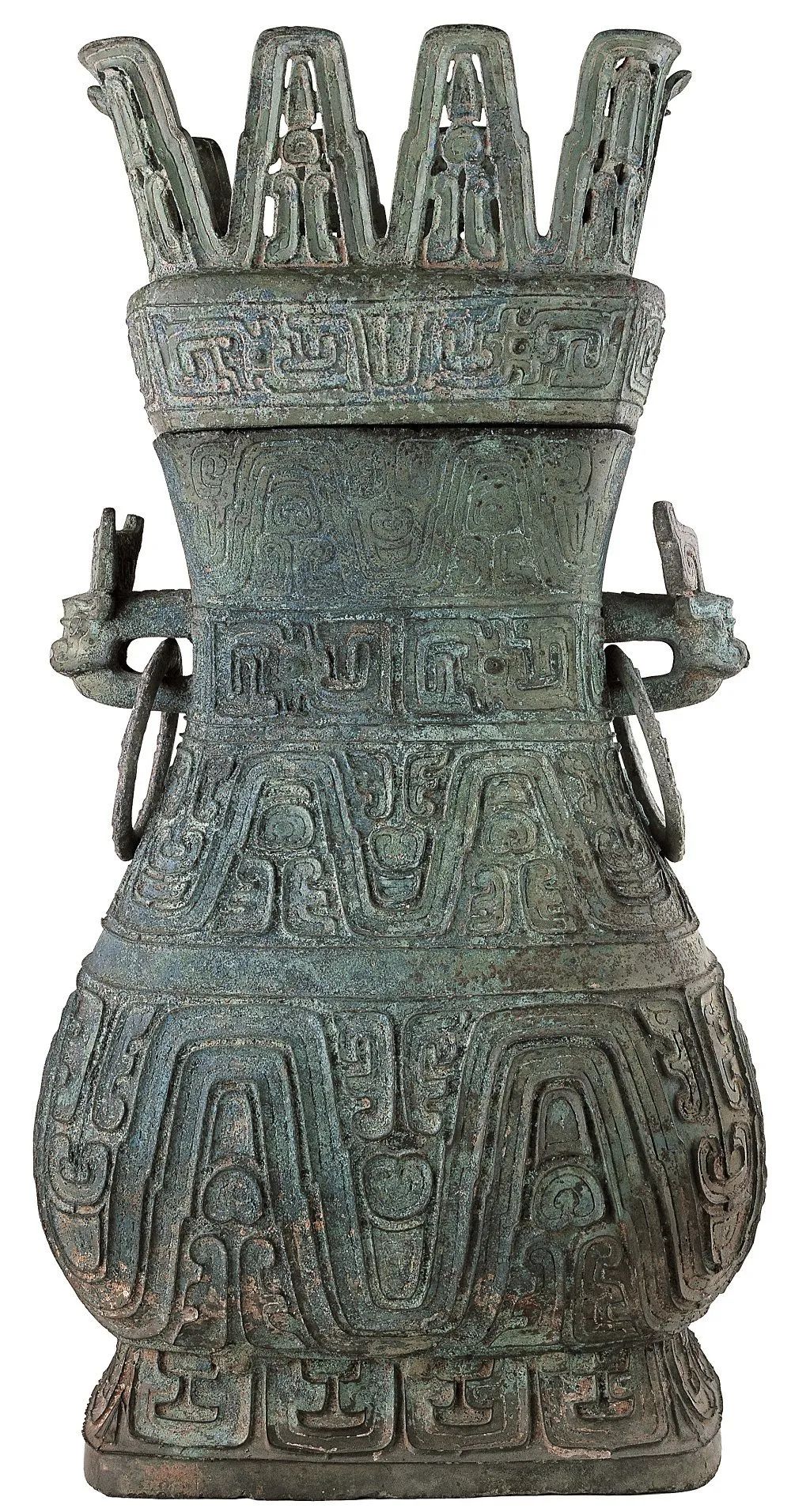
As early as 1966, Sujia Mozoma, located in Jingshan County, Jingmen City, Hubei Province, found a number of bronze wares when building a canal, including Jiuding Qiyi, Ding, pot and other utensils, "Zeng Hou Zhongzi Father" and "Zeng Zhong's Father" Waiting for the inscription, the age is two weeks. This is the earliest discovery of the first -level tomb utensils of the Zeng Guo princes, and it is also the first archeological discovery document record. Beginning in 2014, the Hubei Provincial Institute of Cultural Relics and Archeology Institute and other units carried out systematic archeological excavations on the Sujia Memorial Cemetery. There were more than a hundred tombs of the Qing Dynasty. There are many bronze wares such as 鬲, 簋, and pot unearthed from the tomb number 79, which shows that the owner of the tomb is "Zeng Bo 桼". The owner of the tomb No. 88 is a woman. The two copper pots in the tomb are consistent with the two copper pots in the tomb No. 79, and the inscriptions are exactly the same. Waiting for the inscription, it is speculated that he is Mrs. Zeng Bojie.
Located in the Guojia Temple Cemetery in Dongzhaohu Village, Wudian Town, Zaoyang City, Hubei Province, it was found bronze with inscriptions as early as the 1970s and 1980s. Ge. From 2002 and 2014 to 2015, the Hubei Provincial Institute of Cultural Relics and Archeology was cleaned up and excavated, showing that this is also a public cemetery with vassal -level tombs and two weeks. There are 18 inscriptions on the unearthed copper cymbals, which are read as "Zeng Bozhen casting Qi 钺, using the people as a sentence, not a calendar torture, and using people as politics."征 is a symbol of power. The inscription on the copper cymbal shows that its owner "Zeng Bozhen" may be the Zeng Guojun on the two weeks.
The second floor of the north of the tomb of Yejiashan No. 27.
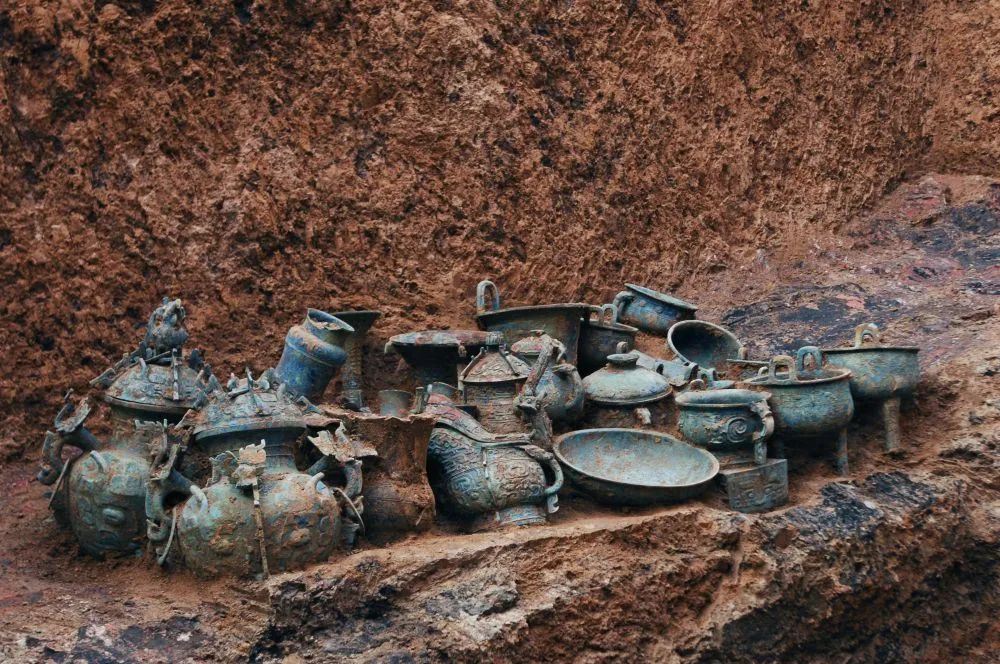
At the end of 2010, a group of bronze wares were found while farmers in Jiangzhai Village, Piaohe Town, Suizhou City. In 2011, it was cleaned up by the Hubei Provincial Institute of Cultural Relics and Archeology and found the ancient tombs of Yejiashan. After archeological excavations, a large number of cultural relics such as pottery, bronze, lacquer wood, and jade were unearthed. After research, it should be a tomb of the early Western Zhou Dynasty. There can be inscriptions such as "Zeng Hou" and "Zeng Houzheng" on the bronze wares unearthed in many tombs. This is better than Zeng Zeng. Hou Yi's 500 years ago Zeng Hou. One of the tombs also has a dragon head that symbolizes the king's power, which can be seen as a monarch -level tomb. The bronze utensils unearthed in another tomb include the inscription "Zeng Houyi as a treasure Zun Yi", which speculates that it is another tomb of another "Zeng Houyi" in the early Western Zhou Dynasty.
In addition, from October 2018 to 2019, archeologists discovered 54 tombs and 3 Makengshag in Suizhou Zaohu Forest, and more than a thousand bronze wares were unearthed. There are two parts of the jujube forest cemetery. The tomb of the Zenghou couple in the middle of the Spring and Autumn Period, one of which is the tomb of "Zeng Houbao" and Mrs. Zeng Houbao's "Kaga" tomb, and the other is "Zeng Gongqiu" Tomb and Mrs. Zeng Gong. Fishing "Tomb. These discoveries added an important stroke to the history of Zeng Guo, supplemented by the missing part of the mid -spring and autumn.
At this point, from Yejiashan to Jujube Forest, from Guojia Temple, Sujia Mo Mo to Yidi Gang, and Drum Dun, through the efforts of archeologists, it has basically constructed a Zeng Guo history that was almost blank in the history of the handed down. Fang Qin said that except for the middle and late Western Zhou Dynasty, Zeng Hou's tomb of each key historical period was excavated, and archeology wrote a Zeng family.
3
Zeng Houyi's first voice
Archaeological excavations outline a complete image of Zeng Guo, bronze and musical instruments are very prominent highlights. A large number of bronze wares were unearthed in the tombs of Zeng Guo in various periods, and they all had rich music cultural relics, especially the bells. From the early Western Zhou Dynasty to the Warring States Period, it reached the highest achievement in the 5th century BC.
A group of 10 pieces of buttons of the Tomb of Guojia Temple Cemetery was unearthed. Palace system. This is the earliest, the largest, most quantity, and mature music performance at present, about 300 years earlier than Zeng Houyi. Among the cultural relics unearthed in the Cemetery of the Guojia Temple, there are the earliest ages, build drums, and the well -preserved curved ruler clock wooden racks and editing combinations.
In the early Western Zhou Dynasty, Ye Jiashan's "Zeng Houzheng" tomb was unearthed in the tomb. A set of well -preserved bells were unearthed in the tomb, consisting of 1 puppet clock and 4 pieces. This is by far the earliest set of clocks that have been found to be the largest and the earliest age. It is 500 years earlier than Zeng Houyi.
Zeng Guo's ritual and music relics reflect the development of ancient Chinese ritual and music civilization. In the early years of the Western Zhou Dynasty, Zhou Gong, on the basis of the innovation of the Yin Shang code system, "made ceremonies and music", formulated a ritual and music system with religious, political, and ethical multiple functions, and clearly stipulated the king, princes, deeds, scholars and other classes The music suspension system and the Zhongle song that should be performed on different occasions.
The bell is matched with the "gold" and "stone" to form a "music suspension system". "Zhou Li": "The position of Zhengle suspension: the palace suspension, the vassal Xuan suspension, the doctor of the Qing Dynasty, and the sliced suspension." The beams and columns of the Guojia Temple can form a curved ruler -shaped shape, which just forms the prince -level music suspension regulation with the editor. As the device of ritual and music, Zeng Houyi bell, its towering and perfect "curved suspension" shelf, with the supporting editor -in -law on three sides, completely and clearly present the "Xuan Xuan" system of the Zhou Dynasty princes, and with other bronze rituals Together with a nearly realistic ceremony. Editorial bell unearthed from the tomb 111 of Ye Jiashan.
Zeng Houyi's "one -hour double sound" was amazed by the world. The bell found in Zeng Hou's tomb in the early days of Yejia Shanxi has a sign of signs of the side drum sound. Through the sound measurement, the 5 -piece clock has a total of 10 sounds high, which constitutes a six -sound column. Double -tone bell. It can be said that Zeng Houyi is the result of the accumulation of etiquette and music culture in ancient China and hundreds of years inheritance of Zeng Guo.
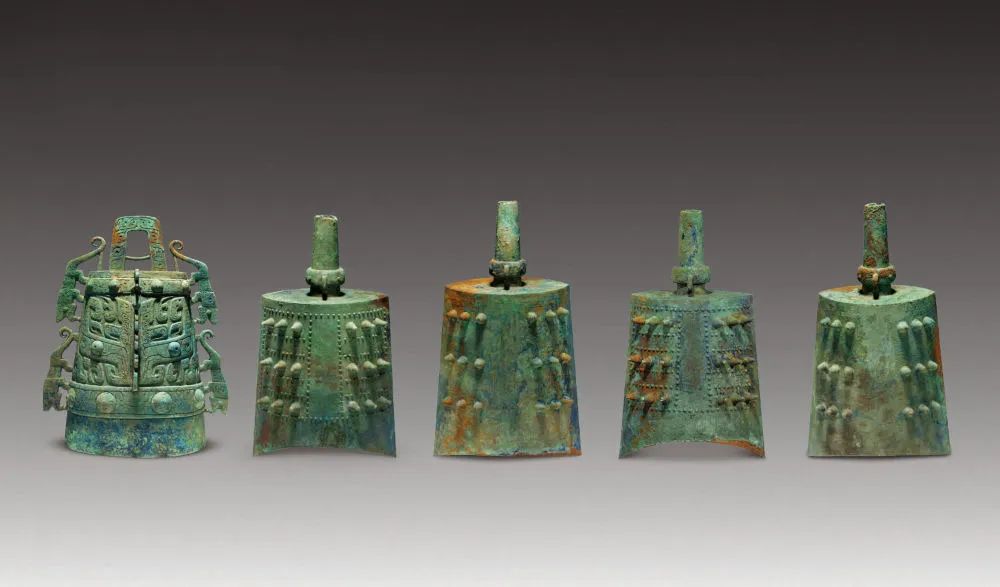
4
"Zeng with the mystery"
After the history, after the Western Zhou Dynasty was destroyed, the marriage of the ancestors of Ji surnamed Ji was seized to various places to set up vassal states. According to the traditional statement, there are many vassal states that have been sealed at the beginning of the Zhou Dynasty. There are no strong powers in the Yangtze River Basin and Jianghan area. They only seal some small nations in the Hanshui Basin. The Chu Kingdom is also a small country of Zhou Feng, and the original land was west of Hanshui.
Archaeological excavations are located east of Hanshui. At present, the earliest Zeng Guo cemetery Yejia Shanxi Zhou Tomb. Scholars study believed that it belonged to the Zhou cultural system. The layout of the cemetery, the combination of funeral utensils, and the characteristics of the shape of the cemetery all have typical Zhou cultural characteristics. Zeng Guo should be Hou Guo's division of the beginning of the Zhou Dynasty.
In 2012, there was a long inscription on the bell of Zeng Houyu discovered by Wenfeng Tower in Suizhou. After reading, it described: "Bo Shi Shangyong, left and right, and martial arts. The soil, the monarch shelter Huaiyi, has Jiangxia. "According to these words, the researchers believe that Zeng's first Feng Guojun is" Bo Shi ". Boyi is the famous sage of Nangong Shi, the famous sages of the early years of the Western Zhou Dynasty, and the ministers of King Zhou Wen and King Zhou Wu. Nangong is suitable for King Zhou Wen and King Zhou Wu. He was named "Nan Gong". Later, Zeng Gong, who was unearthed, begging for the bell, 芈 芈 后, etc., his inscription records can also confirm the ancestor of Zeng Guo as "Bo Shi". Ye Jiashan's Tomb of Zeng Houzheng has the inscription of "犺 犺", which may be made by the tomb owner Zeng Houzheng for his father "Nangong".
Zeng Guo is not only the kingdom of Zhou, and its culture naturally originated from the Central Plains culture. Therefore, the typical Central Plains cultural characteristics were retained in the tombs of Yejiashan in the early Western Zhou Dynasty. However, in the late Western Zhou Dynasty and early spring and autumn, the cultural elements in the tomb of Zeng Guo were more diverse, especially the connection with Chu State. The inscription on the "Mrs. 陔" on the utensils unearthed from the Sujia Mo Cemetery reflects the relationship between Zeng Guo and Chu. He is the surname of the Chu Kingdom.
At this time, Zeng Guo should be a strong prince. In the Caomen Bay Cemetery of the Guojia Temple Cemetery, it was found that the funeral pit with a length of 32.7 meters and 28 burial cars was the largest pit pit in the early spring and autumn princes, showing the powerful military strength of Zeng Guo.
"The land of Handong is big." According to historical records, "Sui" should be the biggest princes in the nation of Ji surnamed in the south at the beginning of the south. However, archeological excavations are rare to "follow" tombs and utensils. So the academic community proposed the subject of "the mystery". The famous archeologist Li Xueqin and others proposed according to the bronze inscriptions of the tomb of Zeng Houyi, "Zeng" and "Sui" may be one, "Zeng" is "Sui", "Sui" is "Zeng". Just like Chu Guo is sometimes called Jing Guo.
The unearthed from the Zhong Hou and the bell provided a new certificate for the two countries of "Zeng" and "Sui". According to its inscriptions, after the Zhou royal family, Zeng Guo and the Chu Kingdom had good associates, and Wu Bing attacked the Chu Kingdom and changed the Chu State. This inscription is combined with the history of "Chu Zhao Wang Ben" in historical books. "Zuo Zhuan" records that in 506 BC, Wu Wang fell into Chu and broke the capital.
This can also explain why after Zeng Houyi died, King Chu Hui had to make a special sacrifice, because Zeng Houyi's ancestor Zeng Hou and the ancestor of Chu Hui who had rescued Chu Hui had a gratitude to Chu. The largest and most special puppet bell in the Zeng Houyi bell. The inscription above shows that the news of the death of Zeng Houyi was the news of the death of Zeng Houyi.
In 2012, archeologists found a copper Ge in the Wenfeng Tower, with inscriptions on the inscription "Following Dasajia's Out of Ge". One theory provides an unearthed physical evidence.
In 2019, the "Granda" tomb excavated in the jujube forest cemetery, studied as the lady of "Zeng Houbao". On the bell unearthed in the tomb, there is an inscription "Chu Wangye with Zhong Xunjia", which is combined with the inscription "Chu Wangyi with Zhongxuan", which was previously collected by the Hubei Provincial Museum, showed that the Jiajia was from Chu. The country marries to follow. This once again confirms that Zeng Hou is Suihou, Zeng Guo is followed by the country, and "Zeng Mystery" once again dial a layer of veil.
Bronze ravioli unearthed from Yejiashan. It was the vassal country that was once followed by the kingdom of the Western Zhou Dynasty to curb the southern barbaric kingdom. However, with the strongness of the Chu State, the Zeng Kingdom gradually became "Chuhua" and even controlled by Chu State, and its cultural appearance gradually got rid of the influence of Zhou culture, and it was part of the Chu culture. After the late Spring and Autumn Period, the characteristics of Chu culture in the cultural relics unearthed from Zeng Guo have become more and more obvious.
"Ye Jiashan revealed the secrets of Zeng Guo's beginning. Guojia Temple stated that Zeng Guo was still a military power during the Spring and Autumn Period. . "Fang Qin said," It is these unexpected archeological discoveries that let us unveil the secret of Zeng Guo and have a dialogue with the ancients through thousands of years. "
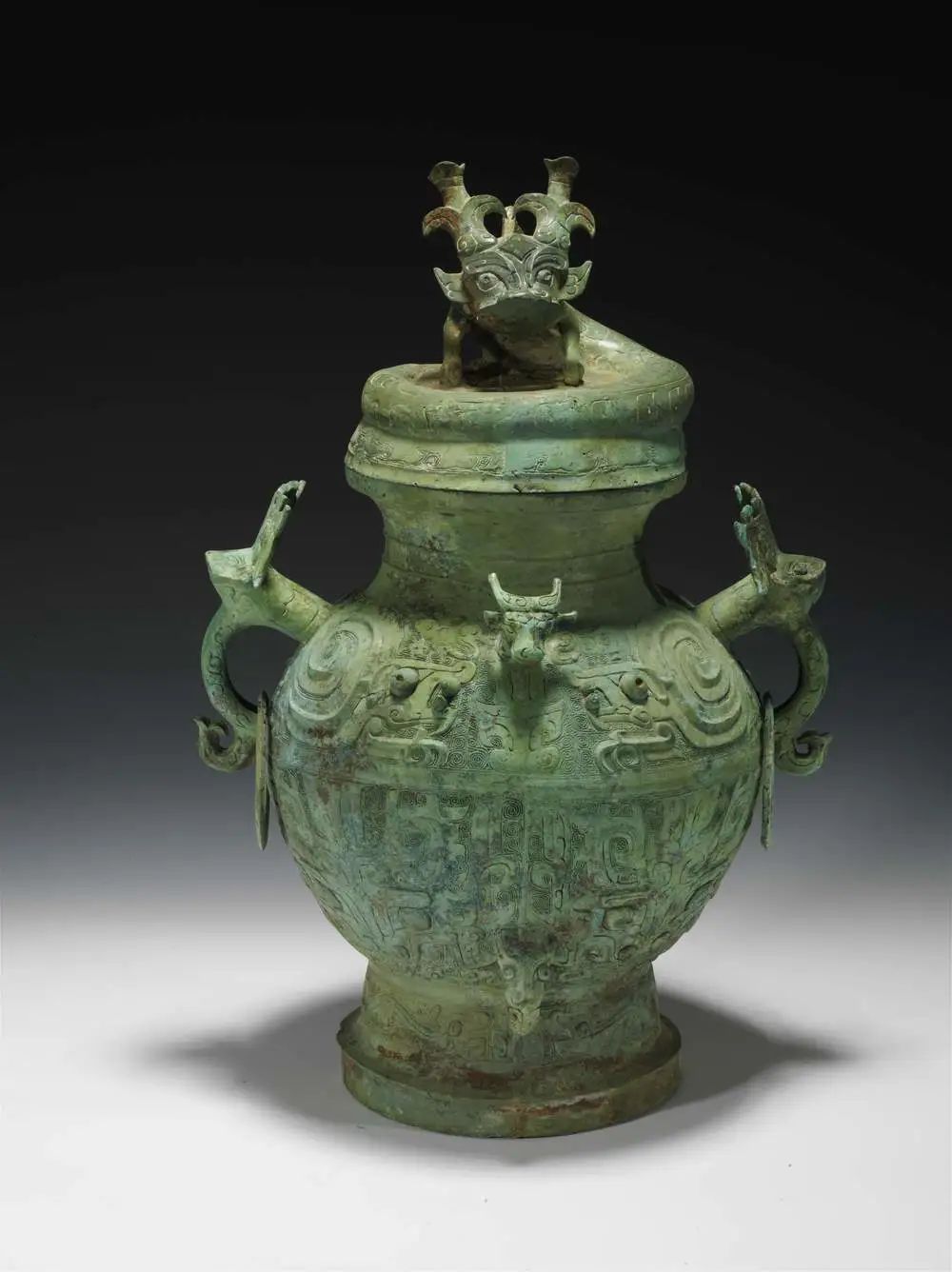
5
"Strategic Resources Bond"
Zeng Guo not only has rich and exquisite bronze wares. Archaeological excavations also show that Zeng Guo may be important bronze smelting and processing bases since the beginning of the Western Zhou Dynasty. In the early tomb of Yejia Shanxi, burial copper ingots were unearthed. At the Sujia Moza site, archeologists also found a large area of smelting relics in the same period as the cemetery. These discoveries show that Zeng Guo not only has a large number of bronze wares, but also has the ability to smell and produces bronze.
The earliest bronze ore found that the archeological discovery was the Tongling ancient mine and smelting site in Ruichang, Jiangxi. It was mined in the middle of the Shang Dynasty. During the two weeks, the ruins of the ancient mine and smelting of copper and green mountains in Hubei, the site of Yangxingang Xiacun, Tongling in southern Anhui, and the Caiye Site of Nanling Ancient Copper Mine have all appeared. Among them, the scale of the Copper Green Mountain site of Hubei Dali Metsurvital was quite large, from the early Western Zhou Dynasty to the Western Han Dynasty during the mining period. It can be seen that during the Shang and Zhou dynasties, there was a very important copper mine mining and smelting belt in the eastern Hubei to southern Anhui in the middle reaches of the Yangtze River. Wait for the traffic.
Zeng Houzheng was unearthed by Ye Jiashan.
During the Shang and Zhou dynasties, copper was the main resource of the production of weapons, rituals and noble living tools, and an important strategic resource for the national competition. The Panlong City site in Wuhan is an important city site in the Shang Dynasty. It has a unique and highly developed bronze culture. The Shang Dynasty set up such an important control force here to control the copper mines in the middle of the Yangtze River.
In January 2021, the Hubei Provincial Institute of Cultural Relics and Archaeological Research Institute also found that in the Lutai Mountain Guo Yuanzui site in Huangpi District, Wuhan City, it was found that the artificial platform area for casting copper was more than 1,000 square meters. So far, the largest Shang Dynasty casting of the Yangtze River Basin has been seen so far. After the detection and analysis of its copper minerals, its raw materials may come from the Copper Green Mountain in East East Hubei. This discovery found a new evidence, proved that as early as the Shang Dynasty, the copper industry in the middle of the Yangtze River had achieved the development of the "entire industry chain" from mining, smelting to casting and transportation.
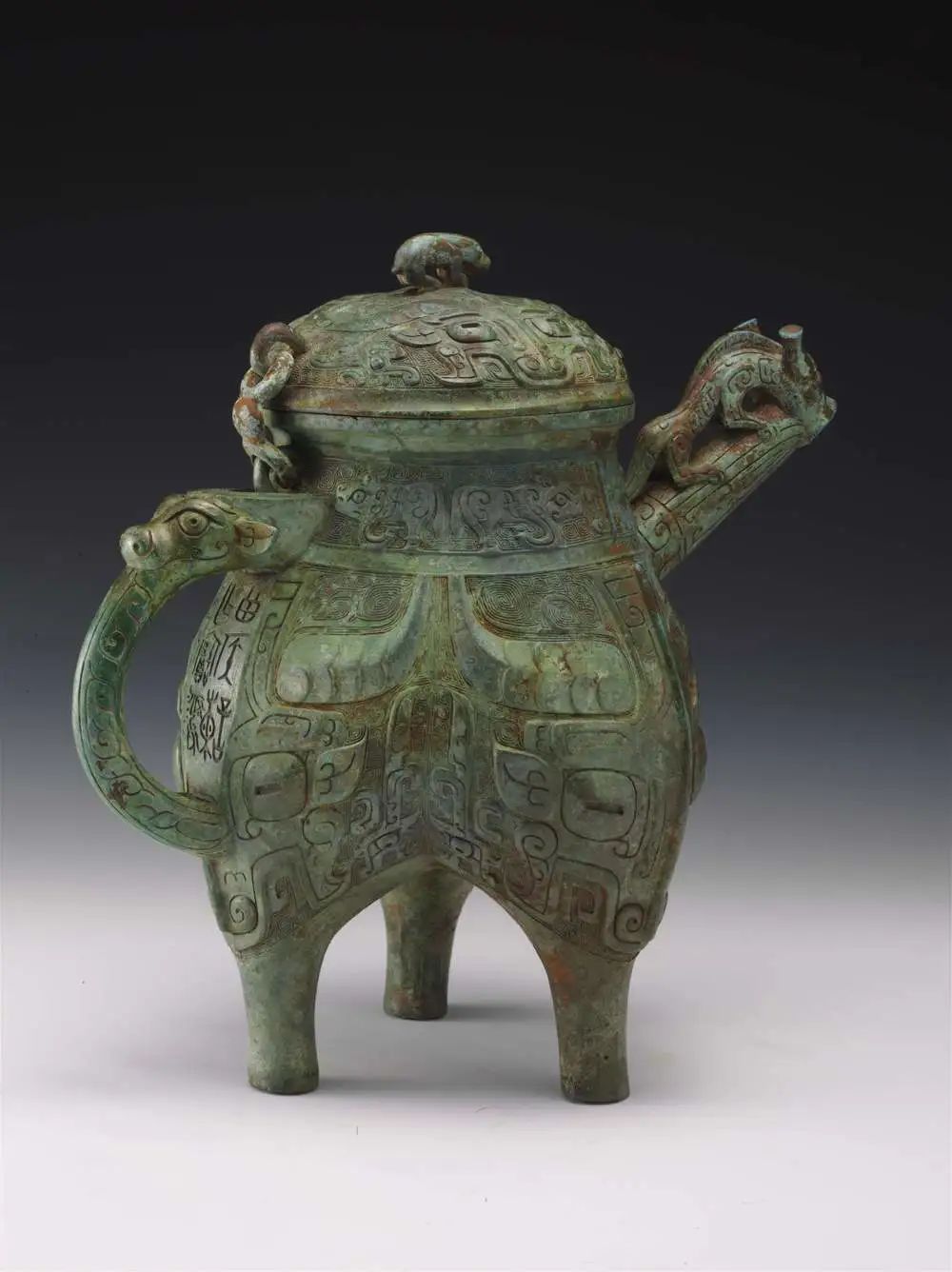
It can be guess that the copper raw materials produced by ancient ore in the middle of the Yangtze River, which are transported through the Yangtze River Waterway and concentrated in "smelting bases" such as Panlong City, Guo Yuanzui and other "smelting bases". Northern region. After Zhou extinguishing business, it is necessary to continue to strengthen the control of southern copper ore resources to ensure the smooth flow of resource supply lines. From the perspective of the scale and skills of the bronze wares unearthed from Zeng Guo, it should have a stable and reliable copper resources supply and developed bronze smelting and processing industry.
Historically, there is a saying that "with the jujube corridor", that is, in the east of Hanshui, today's Zaoyang from Hubei to Suizhou, it has been an important military and traffic road since ancient times. Some scholars believe that Zeng Guo, the vassal country of the Zhou royal family's "Zhenfu Huaiyi", guards the Gua Corridor and is the guardian of the strategic resources of copper mines in the Central Plains region. According to Fang Qin, Zeng Bozhen's copper pot unearthed from the Sujia Mochonal Cemetery is consistent with the inscriptions of the Chinese National Museum's collection. Zeng Bozhen's inscription records that Zeng Bozhen "Kedie Huaiyi, inhibiting the prosperity of the yang, Jin Dao Xingxing, and both humble", "Jin Dao Xixing" is a bronze road. During the Western Zhou Dynasty, Zhou Wangfeng and Hubei were stationed in the "Golden Daoxingxing".
With the decline of the Zhou royal family, the princes rose to fight for the hegemony. The rise of the Chu country west of Hanshui quickly expanded eastward and controlled the copper mine resources grabbed from the barbarians. At this time, Zeng Guo also accumulated strong national strength due to many years of "south". As a result, a strong conflict between Zeng Chu must have a strong conflict. According to historical records such as "Zuo Zhuan" and "Historical Records", the Chu State of Chu during the Spring and Autumn Period was successfully cut, and eventually it became the attached country of Chu.
Chu State controls the production and processing of copper mines, but still requires the broad markets of Central Plains and the north. Copper ore and copper products should be sold to the Zhou royal family and vassal states to gather wealth. Zeng Guo may be the "middlemen" where Chu State transports copper resources to Zhongyuan. Even in the middle of the Warring States Period, Zeng Guo still maintained a wealthy and prosperous development status on the side of the Chu Kingdom, especially in the continuous development of bronze skills and etiquette culture. The Chu State was able to "win the Central Plains" because of the control of the copper mine resources in the Yangtze River Basin and the "Golden Daoxingxing" transportation main road, and became one of the seven heroes of the Spring and Autumn Period and the Warring States Period. King Chuzhuang asked the Central Plains and said that "the beak of the Chu State is enough to be Jiuding." This is not only a kind of Yao Wu Yangwei, but also a high confidence in the military economic strength of Chu country with copper as an important strategic resource.
It can be seen that in the era when the Central Plains and Chu Culture were both, Zeng Guo was a special existence. It was not only the hub of the economic resources of the Yangtze River Basin and the Yellow River Basin, but also the blend of cultural integration between the middle reaches of the Yangtze River and the Central Plains region. Important links have important role and special status in the process of Chinese civilization.
Uncle Ku Welfare
Uncle Ku's book is always there! Reader Culture provides Uncle Ku with 25 "No Wait, Shan Hai Jing 2" and given enthusiastic readers. Please comment under the article that the top 3 (more than 30) who likes the highest likes will get a book.
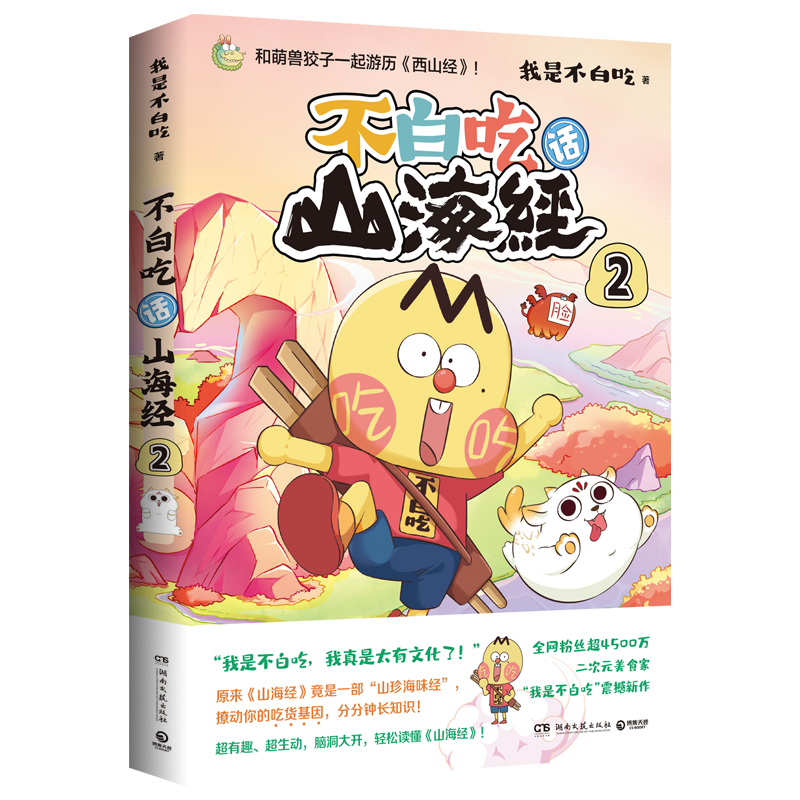
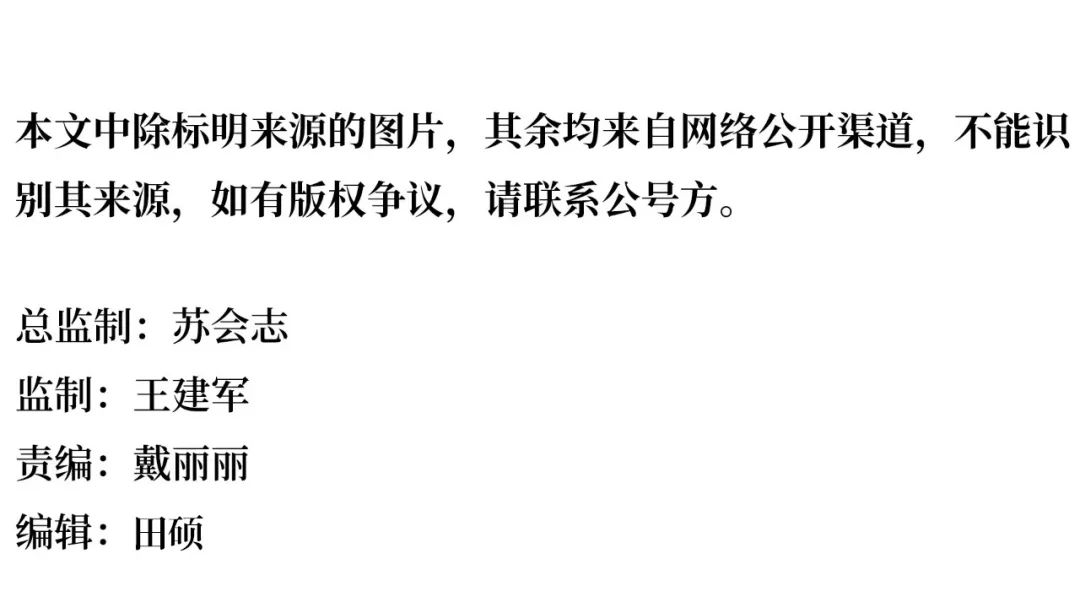
- END -
The ancient Chinese people's understanding of the planet Sun and Moon Food
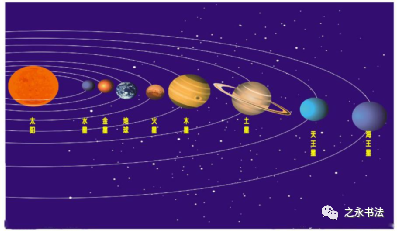
One | Seven ZhengThe ancients called Tai Baixing (Venus), Sui Star (Jupiter), Chen...
Shaanxi painter Cheng Guang's work appreciation

Cheng Guang, formerly known as Cheng Liping, was born in Zhaojia Village, Qingyi T...